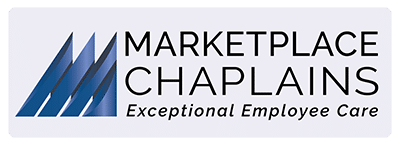Workplace Strategies for Mental Health and Suicide Prevention
SUMMARY
Marketplace Chaplains outlines strategies for improving mental health and suicide prevention in the workplace. Key recommendations include promoting a culture where mental health is openly discussed, offering Employee Assistance Programs (EAPs), encouraging communication, fostering a healthy work-life balance, and addressing workplace stress. These efforts help reduce stigma, support struggling employees, and improve overall productivity. The piece emphasizes that employers play a vital role in saving lives through these preventative measures.
HIGHLIGHTS
- Promote open conversations about mental health to create a stigma-free environment, aiding in suicide prevention.
- Implement Employee Assistance Programs (EAPs) to provide mental health support and resources for employees.
- Train leadership to recognize warning signs of suicide and mental health issues.
- Encourage work-life balance to reduce stress, contributing to better mental health and suicide prevention.
- Provide regular mental health check-ins to proactively identify potential suicide risks.
Employers are responsible for providing a safe and healthy workplace for their employees.

This includes promoting mental health and preventing suicide. Workplace strategies for suicide prevention can be life-saving. Therefore, the importance of suicide prevention in the workplace and outlining some key strategies that employers can use to protect their employees is of the utmost importance.
Promote a Culture of Employee Mental Health:
Employers should promote a culture of mental health in the workplace. This includes creating an environment where employees feel comfortable discussing their mental health and seeking help when needed.
There are a number of ways to promote a culture of mental health in the workplace. Some employers may choose to offer Employee Assistance Programs (EAPs). These programs provide confidential counseling and support services to employees who may be experiencing personal or work-related problems. Other employers may choose to provide training on mental health topics such as stress management, burnout prevention, and suicide prevention.
Encourage Open Communication:
Encouraging open communication about mental health in the workplace can help to reduce the stigma around mental illness and make it easier for employees to seek help when needed. Employers can encourage open communication by creating an open and inclusive environment, providing training on how to talk about mental health, and encouraging employees to speak up if they are struggling.
Some employers may choose to create an employee forum where employees can anonymously ask questions or share concerns about their mental health. Others may choose to provide information about local resources such as therapists or support groups. If an employee does come forward with a concern, it is important to listen without judgment and offer support.
Related Articles
Promote Healthy Work-Life Balance:
One of the best ways to promote mental health in the workplace is to promote a healthy work-life balance. This means ensuring employees have enough time for their personal lives outside work. Of course, it can be difficult to achieve a healthy work-life balance, but there are a number of things employers can do to encourage it.
Some employers may choose to offer flexible work hours or telecommuting options. Others may provide access to on-site child care or gym facilities. There are many creative ways to promote a healthy work-life balance, and employers should tailor their approach to fit the needs of their employees.
Address Stress in the Workplace:
Stress is a common problem in the workplace, and it can have a severe impact on mental health. Therefore, employers should take steps to identify and address workplace stress sources. This may include training on managing stress, implementing policies to reduce workloads, or offering support services such as employee assistance programs. By taking action to address stress, employers can create a healthier and more productive work environment.
In conclusion, while these are only a few examples, workplace strategies for suicide prevention are key for employer responsibility. It falls on employers to provide resources and support for employees who may be struggling with mental health issues.
Employers can save lives by taking action with training to promote mental health and reduce suicide risk in the workplace.
At Marketplace Chaplains we have extensive experience in improving your employee’s mental health by providing you with chaplain services. Contact us today at 1-800-775-7657.
Recommended Post
Mental Health Care – Suicide
Depression and stress are at an all-time high. The COVID-19 Pandemic has impacted all of us. We may be adding more responsibilities onto our already full plates, attempting to teach our young children...
Read More






